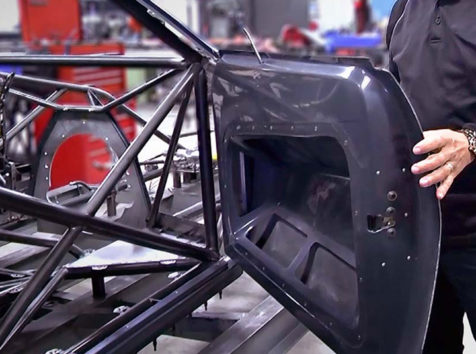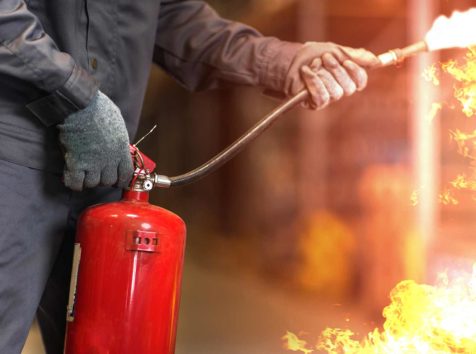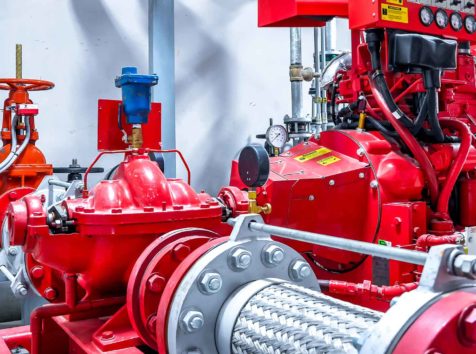This white paper is to provide a guideline for proper selection of foams (fire fighting) to be used in the field over the surface of the flammable and combustible liquid fuels. Most of the people are not aware of which foams to be used where and hence cannot achieve the effective results.
Before reviewing the merits of the different types of foam concentrates, there are certain terminologies associated with foam that must be understood.
Foam
A firefighting foam is a stable mass of small air-filled bubbles, which have a lower density than oil, gasoline or water. Foam is made up of three ingredients – water, foam concentrate and air. When mixed in the correct proportions, these three elements form a homogeneous foam blanket.
Mostly method of foam generation namely used by fire fighters today is Mechanical foam.
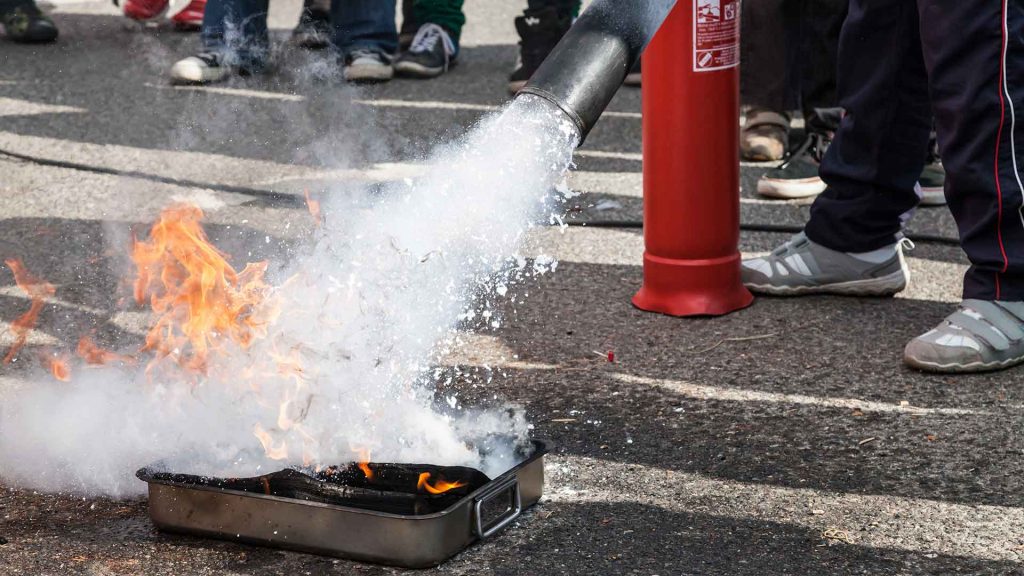
Mechanical foams are made by mechanically mixing air with a solution consisting of fresh or salt water to which a foam liquid concentrate has been added.
Most of the current mechanical foam concentrates that are commercially available are:
- Aqueous Film Forming Foam (AFFF)
- Alcohol Resistant (AR-AFFF)
Before we review these foam concentrates, please understand that there are two different basic flammable or combustible fuel groups.
- Standard hydrocarbon fuels such as gasoline, diesel, kerosene, jet fuel, etc. These products do not mix with water or are not miscible in water, i.e. these products all float on top of the water and, for the most part, they do not intermix.
- Polar solvent or Alcohol type fuels are fuels that mix readily with water or are miscible in water. E.g., esters, ethers, alcohols, aldehydes, and keytones.
| Polar Solvent Group | Example |
| Alcohol | Isopropyl Alcohol |
| Ketones | Dimethyl Ketone, ethyl methyl ketone |
| Esters | N-Butyl Acetate |
| Carboxylic Acids | Glacial Acetic Acid |
| Amines | Ethylene Diamine |
| Aldehydes | Propionaldehyde |
| Ethers, except Diethyl and Methyl Tertiary Butyl Ether | Isopropyl ether |
It is imperative that while preparing to fight a flammable liquid fire, identify which fuel group the involved flammable liquid belongs. This is necessary, as not all foam concentrates are suitable for use on the Polar type fuel spills or fires.
For hydrocarbon type fuels, the most common foam to be used is Aqueous Film Forming Foam (AFFF)
A concentrated aqueous solution of one or more hydrocarbon or fluoro-chemical surfactants that form a foam capable of producing a vapor-suppressing aqueous film on the surface of hydrocarbon fuels. The foam produced from AFFF concentrates is dry-chemical compatible and is therefore suitable for use in combination with that agent.
AFFF generated foams extinguish hydrocarbon flammable liquid fires the same way as the protein or fluoroprotein foams; however, there is an additional feature. An aqueous film is formed on the surface of the flammable liquid by the foam solution as it drains from the foam blanket.
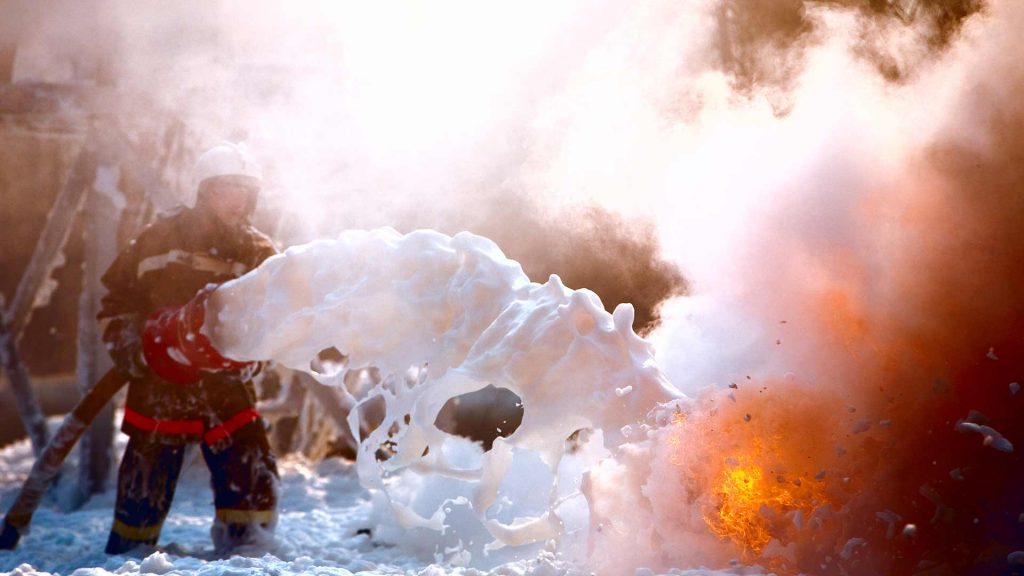
This film is very fluid and floats on the surface of most hydrocarbon fuels. This gives the AFFF unequaled speed in fire control and knockdown when used on a typical hydrocarbon spill fire. In certain circumstances, it is possible to notice the fire being extinguished by the “invisible” film before there is complete foam blanket coverage over the surface of the fuel.
For Polar type fuels, the most common foam to be used is Alcohol Resistant (AR-AFFF)
Used for fighting fires involving water soluble materials or fuels that are destructive to other types of foams. Some alcohol-resistant foams may be capable of forming a vapor-suppressing aqueous film on the surface of hydrocarbon fuels.
Flammable liquids that readily mix with water are a more difficult fire to extinguish as opposed to a hydrocarbon fire. Polar liquids destroy any foam blanket that has been generated using standard AFFF or fluoroprotein type concentrates. Water in the generated foam blanket mixes with Polar fuel causing the foam blanket to collapse and disappear until the fuel surface is completely exposed again. To overcome this problem, AR-AFFF type concentrates were developed. Using plain AFFF concentrate as a base material, a high molecular weight polymer is added during the manufacturing process. When AR-AFFF is used on a polar fuel fire, the polar fuel tries to absorb water from the foam blanket. A polymer precipitates out forming a physical membrane/barrier between the fuel surface and foam blanket. This barrier now protects the generated foam blanket from destruction by the alcohol fuel.
Not all AR-AFFF type of concentrate are equally effective on all Polar fuel groups and hence fuel group specific AR-AFFFs are developed. This yields least knockdown time and are most effective extinguishing agent on that fuel group.
For example, below are some of the options:
| SFD AR-AFFF 1×3%-C6 | Alcohols |
| SFD AR-AFFF 3×3%-C6 | Alcohols |
| Ethyl Alcohol | |
| Methyl Alcohol | |
| Hydrocarbons | |
| Alcohols | |
| SFD AR-AFFF 3×6%-C6 | Alcohols |
| SF-FS-PP AR-AFFF 3×3%-C6-D | Alcohols |
| Acetone | |
| Methyl Alcohol | |
| Methyl Ethyl Ketone | |
| SF-FS-PP AR-AFFF 3×6%-C6-D | Alcohols |
Conclusion:
In order to get more efficient results of foam on a fire arising from a particular fuel type, proper selection of foam allows the fire to be controlled quickly and effectively.
Whitepaper Authored By:
Eng. Nilesh Mistry
R&D Engineer at Sffeco Global
BE (Mechanical),
15+ year of Experience in Industry
Eng. Dilbagh Singh
Engg. R&D Manager at Sffeco Global
BSc., BE (Fire), DIIS,
15 year of Experience in Industry
